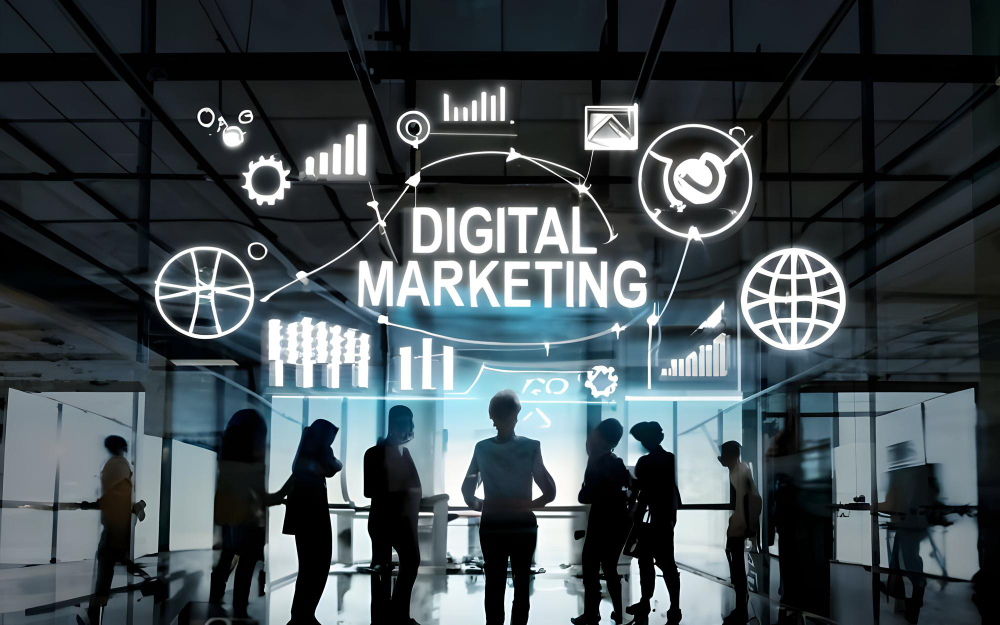
The world of software development is evolving rapidly, with emerging technologies and new methodologies constantly reshaping the landscape. Similarly, the digital marketing landscape is quickly evolving, driven by tech advancements, changing consumer behavior, and emerging trends. In today’s digital age, staying updated with the latest software development trends is crucial for businesses and marketers alike to remain agile, adaptive, and innovative. By effectively leveraging these software development trends, companies can engage audiences, drive conversions, and achieve business objectives.
Personalization Revolution
Personalization is a cornerstone of effective digital marketing strategies, enabling brands to deliver relevant, tailored experiences that resonate with individual consumers. The proliferation of data analytics, artificial intelligence (AI), and machine learning (ML) technologies has empowered marketers to glean actionable insights into consumer behavior, preferences, and interests, enabling hyper-targeted campaigns across multiple channels. This shift is also influencing Software Development Trends, as developers focus on creating solutions that support personalized user experiences.
1.Data-Driven Marketing
Marketers leverage data analytics tools and customer relationship management (CRM) platforms to collect, analyze, and segment vast consumer data. By understanding customer demographics, purchase history, and online interactions, marketers can create detailed customer profiles and deliver personalized messaging that speaks directly to the needs and interests of their target audience. This Modern Software Development approach emphasizes the importance of data-driven decisions.
2.Dynamic Content Delivery
Personalization extends beyond static messaging to dynamic content delivery, where AI-driven algorithms customize content in real time based on user behavior and preferences. Dynamic ads, product recommendations, and personalized emails are examples of how marketers dynamically adjust content to align with individual customer journeys, driving engagement and conversion rates.These strategies are supported by Software Development Technologies that enable real-time data processing and adaptive content strategies.
3.Lifecycle Marketing
Personalization is integrated throughout the customer lifecycle, from acquisition and onboarding to retention and advocacy. Marketers employ lifecycle marketing strategies to nurture relationships, anticipate customer needs, and deliver personalized experiences at every touchpoint. By tailoring messaging and offers to specific lifecycle stages, companies can maximize customer lifetime value and foster brand loyalty. This comprehensive approach to customer interaction is a critical aspect of Software Development Innovations.
Video Marketing Dominance
Video has emerged as a dominant force in digital marketing, captivating audiences with compelling visual storytelling and immersive brand experiences. The explosive growth of video-sharing platforms and the widespread adoption of mobile devices have fueled the demand for video content, prompting marketers to embrace video as a central component of their marketing strategies. This trend also impacts Software Development Trends, as developers build tools and platforms optimized for video content creation and distribution.
1. Rise of Short-Form Video
Short-form video content, characterized by its brevity and shareability, has gained popularity on platforms like Instagram Reels and Snapchat. Marketers leverage these platforms to create engaging and entertaining video content that resonates with younger audiences and drives brand awareness. Short-form videos offer a creative canvas for brands to showcase their personality, creativity, and authenticity in a visually compelling format, supported by the latest Software Development Technologies designed for ease of use and scalability.
2. Live Streaming
Live streaming has emerged as a powerful tool for real-time engagement and community building. Brands leverage platforms like Facebook Live, Instagram Live, and Twitch to host interactive events, product launches, and behind-the-scenes tours. Live streaming enables brands to connect with audiences authentically and unscripted, fostering deeper relationships and generating buzz around their products and services.This form of interaction is a key area of Software Development Innovations, focusing on enhancing real-time communication capabilities.
3. Video SEO and Optimization
Optimizing video content for search engines is essential for maximizing visibility and driving organic traffic. Marketers employ video SEO techniques such as keyword optimization, metadata tagging, and transcript inclusion to improve rankings and attract relevant audiences. Marketers can enhance their discoverability and reach a broader audience by aligning video content with user search intent and leveraging platforms like YouTube and Vimeo. These practices are increasingly integrated into Modern Software Development frameworks.
Voice Search Optimization
The proliferation of voice-activated devices and virtual assistants has transformed the way consumers search for information and interact with brands online. Voice search optimization has emerged as a critical component of digital marketing strategies, requiring marketers to adapt their SEO and lead generation tactics and content strategies to align with the nuances of spoken queries. As Software Development Trends evolve, there is a growing emphasis on optimizing applications and platforms for voice interaction.
1. Semantic Search and Natural Language Processing
Voice search relies on natural language processing (NLP) and semantic search algorithms to understand user queries and deliver relevant results. Marketers optimize content for long-tail keywords, conversational phrases, and question-based queries to align with how people speak and interact with voice-activated devices. By understanding user intent and context, marketers can tailor their content to provide accurate and helpful answers to voice search queries, supported by Software Development Technologies that prioritize NLP capabilities.
2.Local SEO and Mobile Optimization
Marketers prioritize local SEO tactics, such as optimizing Google My Business listings, acquiring local citations, and enhancing mobile usability, to improve visibility in voice search results. By optimizing for location-based queries and ensuring mobile-friendly experiences, marketers can capture local search traffic and drive foot traffic to physical locations. These strategies are becoming increasingly important in Software Development Future Trends, as local and mobile optimization take center stage.
3.Featured Snippets and Position Zero
Voice assistants often read out featured snippets or position zero results from search engine results pages (SERPs). Marketers aim to optimize content to appear in featured snippets, providing concise answers to common questions and increasing the likelihood of being selected by voice assistants. By structuring content for snippet-friendly formats, such as lists, tables, and Q&A formats, marketers can enhance their chances of earning coveted position zero placement and capturing voice search traffic. This emphasis on structured data and quick accessibility is a key trend in Software Development Innovations.
By understanding and adapting to these Software Development Trends, businesses can stay ahead of the curve, leveraging the latest technologies to deliver highly personalized, engaging, and efficient digital marketing strategies that drive success in an ever-evolving digital landscape.



